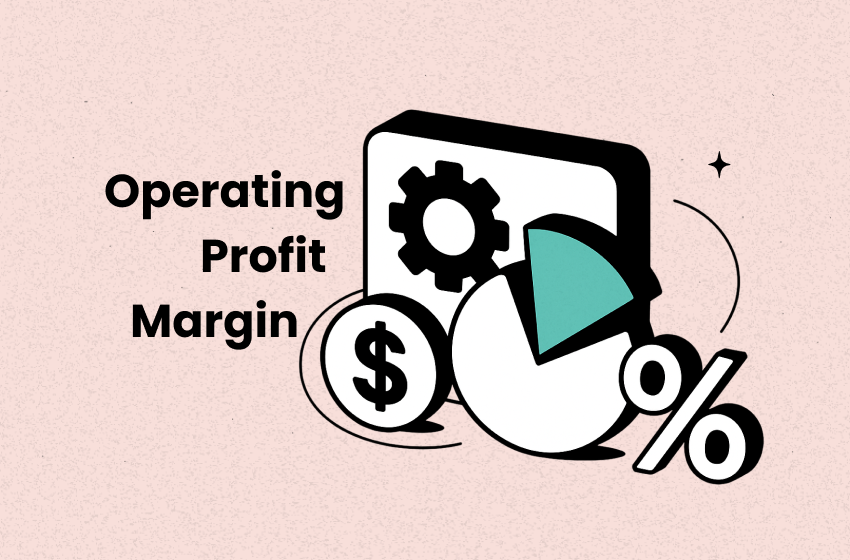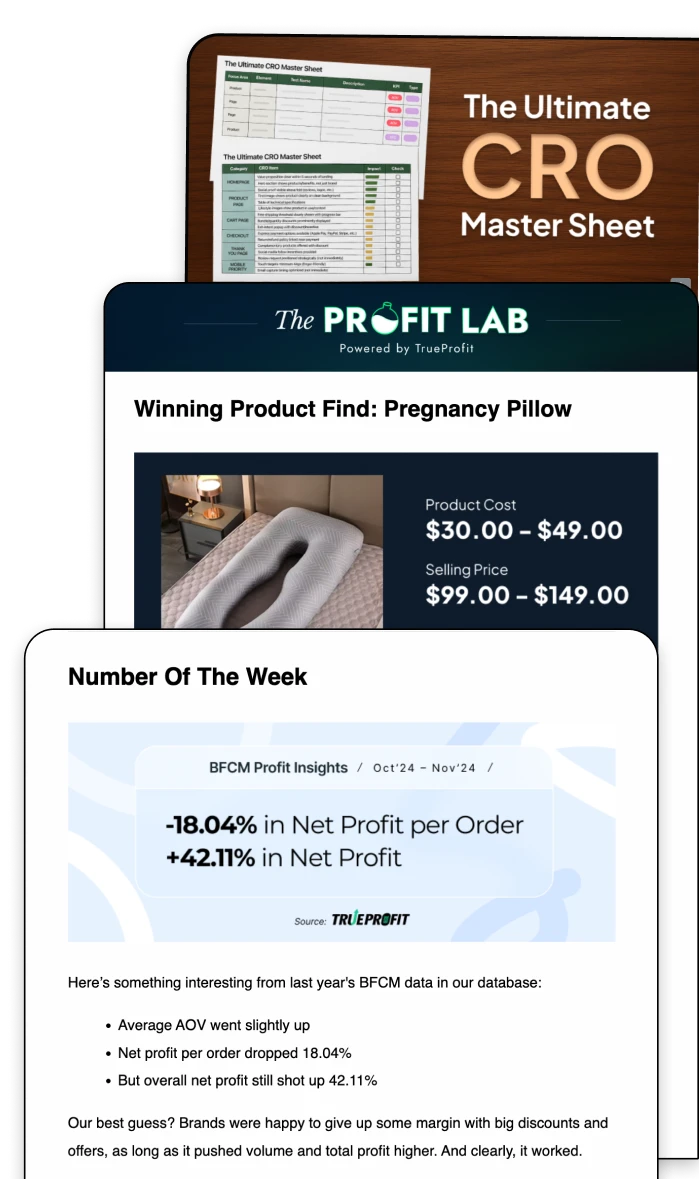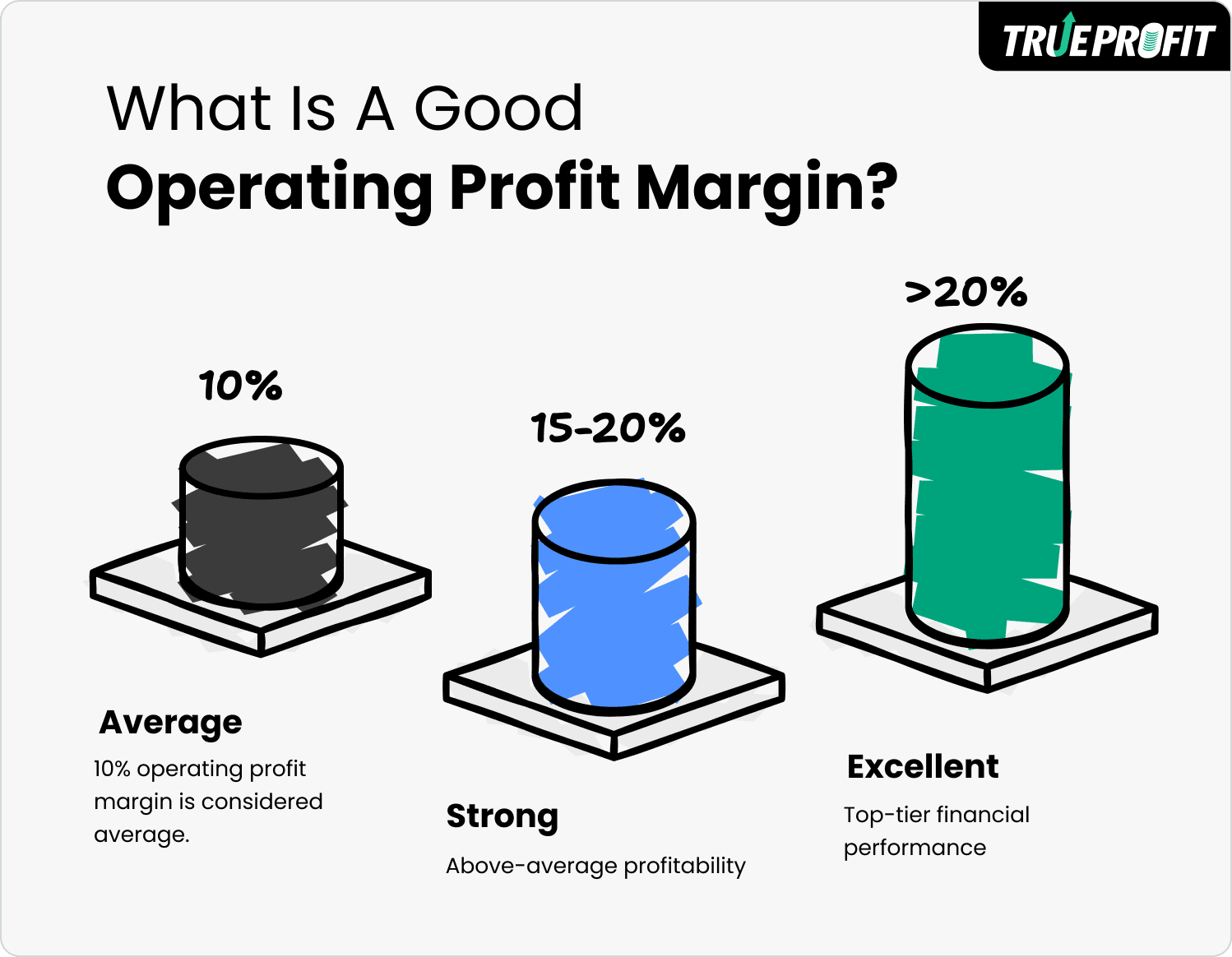What Is A Good Operating Profit Margin? The 2025 Answer

A good operating profit margin (also known as operating margin or operating profit percentage or operating income margin) typically falls between 10% and 20%. A 10% margin is generally considered average, 15–20% is strong, and anything above that is excellent.
But margins aren’t one-size-fits-all.
What’s considered a “good” margin in retail might be disappointing in tech. What really matters is how your margin compares within your industry and whether it's improving over time.
In this guide, we’ll break down what defines a good operating margin, what affects it, how it varies by industry, how to calculate it — and why it’s one of the most important numbers for running a healthy business.
What Is a Good Operating Profit Margin?
Generally speaking, a 10% operating profit margin is considered average. 15–20% is strong, and anything beyond is excellent.
But there’s no one-size-fits-all “ideal” margin—it varies by industry.
For instance, a SaaS company with low overhead might regularly hit margins over 20%, while a retail brand may sit closer to 5–10% due to higher costs.
Operating Profit Margin Benchmark by Industry
Here's a breakdown of average operating profit percentage across major industries:
Consumer Goods & Retail
- Apparel: 8.73%
- Furn/Home Furnishings: 6.51%
- Household Products: 18.38%
- Office Equipment & Services: 8.17%
- Packaging & Container: 9.79%
- Paper/Forest Products: 10.13%
Food & Beverage
- Beverage (Alcoholic): 22.85%
- Beverage (Soft): 20.01%
- Food Processing: 11.97%
- Restaurant/Dining: 15.96%
Construction & Materials
- Building Materials: 13.34%
- Construction Supplies: 15.13%
- Engineering/Construction: 5.57%
- Homebuilding: 15.52%
Technology & Electronics
- Computer Services: 6.06%
- Computers/Peripherals: 22.65%
- Electrical Equipment: 7.15%
- Electronics (General): 8.15%
Healthcare
- Healthcare Products: 14.81%
- Hospitals/Healthcare Facilities: 12.45%
Energy & Environment
- Coal & Related Energy: 10.97%
- Green & Renewable Energy: 21.60%
- Environmental & Waste Services: 14.89%
Finance & Insurance
- Financial Services (Non-bank & Insurance): 16.33%
- Insurance (General): 16.43%
These are general benchmarks from NYU study. Your actual margin can vary depending on scale, geography, business model, and cost structure.
Factors that Affect Operating Profit Margin
Several factors can impact operating income margin:
1. Price-to-Value Fit
Your pricing only supports a healthy operating margin when it aligns with what customers are willing to pay and covers your costs. If you underprice to stay competitive without managing your COGS and expenses, your margin suffers.
Learn 9 pricing strategies to protect your margin in 2025.
2. Product Cost Control (COGS)
Cost of Goods Sold (COGS) includes everything that goes into producing or sourcing what you sell. When raw material prices rise, suppliers become less efficient, or logistics costs spike, it directly reduces your operating profit.
Here’re tips to lower your COGS and more - all designed to improve your profit margin.
3. Operational Expense Management
Your operating expenses like salaries, rent, software, and marketing should scale smarter, not just bigger. If these grow faster than your revenue, your operating margin will decline.
4. Scalable Cost Structure
Businesses with scalable infrastructure — such as automation, optimized supply chains, or fixed-cost leverage — often see margins expand over time. If every growth milestone adds the same cost burden, you’re likely stuck with flat or shrinking margins.
What is Operating Profit Margin and How to Calculate?
Operating profit margin is a ecommerce metric that shows a company’s revenue remains after covering its operating costs, expressed as percentage. It excludes interest and taxes, so you get a clean look at how efficient your core operations really are.
The formula:
Knowing that your operating profit (also known as operating income) = Revenue – COGS – Operating Expenses
This metric is often used to evaluate how well a company is being managed. A stable or improving operating margin usually signals strong cost control and efficient operations. If your operating margin is consistently low or declining, it’s a signal to re-evaluate your cost structure or pricing.
Why is Operating Profit Margin Important?
Operating profit margin provides a clear picture of how well your company is performing based on its core operations — without outside costs like interest and taxes.
By tracking and improving your operating profit margin, you can:
- Make smarter financial decisions like knowing when to reinvest, where to cut costs, or how much room you have to scale.
- Spot red flags early, such as declining margins may point to rising expenses, supply chain issues, or pricing misalignment before they impact your bottom line.
- Stay resilient, use strong margins as a buffer during slow seasons or economic uncertainty.
Track Your Profit Margin Effortlessly
In a market that rewards efficiency, knowing your operating margin helps you stay sharp, focused, and profitable. Tracking it over time helps you stay grounded in the health of your operations, not just the excitement of revenue.
Knowing what a good operating margin looks like is just the beginning. The real impact comes from tracking it regularly—and acting on what you find.
With TrueProfit, you get real-time visibility into your margins. TrueProfit helps Shopify sellers by tracking net profit, operating margin, and more in real time —so you’re never in the dark about your business’s financial health and make smarter decisions every step of the way.
Harry Chu is the Founder of TrueProfit, a net profit tracking solution designed to help Shopify merchants gain real-time insights into their actual profits. With 11+ years of experience in eCommerce and technology, his expertise in profit analytics, cost tracking, and data-driven decision-making has made him a trusted voice for thousands of Shopify merchants.





 Shopify profits
Shopify profits


